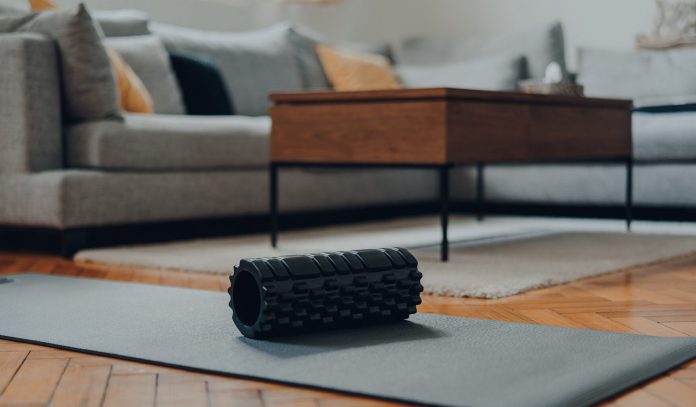Whenever you’ve had a deep-tissue massage, you’ve probably thought, “It would be nice if someday we could all get regular deep-tissue massages.” Fortunately, it turns out that someday is today. Say hello to your new best friend: foam rollers. This relatively inexpensive piece of equipment (you can find a good one for $30) has transformed from a mysterious technique used by professional athletes and therapists to an everyday practice for people at all levels of fitness.
What’s so special about foam rollers? They’re easy to use. Place your target body part on top of the roller and roll back and forth. That’s it. This simple movement targets the myofascia, the mesh-like fibers that form around your muscles in response to damage caused by both working out too much (injury and inflammation) and being inactive. When myofascia get stuck on your muscles, they cause pain and prevent normal muscle movement.
What else is there to love about your new best friend? The effects are immediate. With no stretching, after using foam rollers, you’ll notice changes in your mobility and posture. One study, published in the Journal of Strength and Conditioning Research, found foam rolling the quads increased participants’ range of motion by as much as 10 degrees.
Plus, regular foam rolling reduces muscle soreness. A Medicine & Science in Sports & Exercise study found participants who rolled post-workout experience peak muscle soreness 24 hours after exercising; those who didn’t roll saw their pain peak at 48 hours.
The foam roller rocks everywhere, but it’s particularly successful on these common trouble spots:
- Half of all Americans say they experience lower back pain. The muscles are either too tight or too weak, causing spasms. Sitting at a desk all day and sleeping on the wrong mattress at night don’t help. Tight hamstrings, hip flexors or glutes—or imbalances in these muscle groups—can also affect your lower back. The solution: Take a foam roller to your lower back.
- Your glutes stabilize and mobilize your hip joint. If this muscle isn’t strong, you’re likely to experience loads of hip pain. The solution: Foam rolling this large muscle group activates the muscles you sit on all day, every day.
- Many folks experience knee pain, which often occurs because the kneecap is subjected to a lot of force when you do high-impact activities like running. The truth is this isn’t actually a knee problem. It’s usually a muscle imbalance, tightness or bad conditioning in the quads and hips. If the quad is imbalanced, it pulls the kneecap too far in one direction, causing pain. The solution: Roll the quads and hip flexors to correct this imbalance.
So if you’re active (you are, aren’t you?), the smart move is to roll with a foam roller. Of course, we recommend you consult with your physician or physical therapist before starting a foam roller program. (Most people will be cleared immediately, and your doctor will probably encourage the practice.) “If you only buy one piece of exercise equipment for the rest of your life,” said Jordan D. Metzl, M.D., author of The Exercise Cure and The Athlete’s Book of Home Remedies, “make it a foam roller.”






